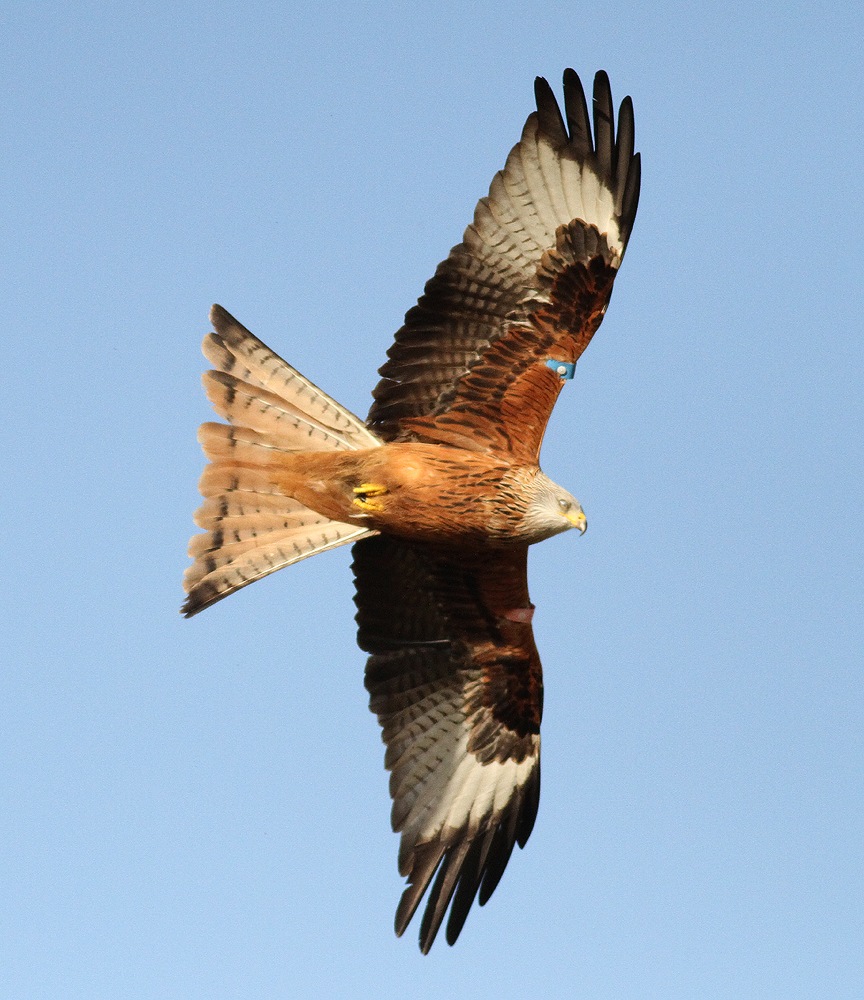Another poor breeding season for the northeast's Red Kites
The wettest spring since records began appears to have had a major impact on the region's Red Kite population and its breeding success. It resulted in another difficult year for the reintroduced species and prevented any increase in breeding success from the 2011 season, when kites were still suffering from the effects of the harshest and most prolonged winter for more than three decades. 2012 was the third year in which responsibility for monitoring was undertaken by Friends of Red Kites (FoRK), the organisation made up of former volunteers with the Northern Kites project, which released 94 birds from the booming Chilterns population over a three-year period. Again, ringing, wing-tagging, the completion of BTO Nest Record Cards and liaison with the Rare Birds Breeding Panel was undertaken by FoRK.
Monitoring during March and April revealed that 26 pairs of kites were holding territories; 19 of these pairs went on to build nests or to refurbish those used in previous years. One nest was completed but not used, while the 18 other pairs went on to lay eggs. Thirteen of those pairs succeeded in fledging a total of 22 young, a very similar result to the 12 pairs and 24 young in 2011. Two pairs fledged three young each, while the others succeeded in rearing one–two chicks. Five pairs failed, four of them almost certainly due to natural causes. Of these, one failed during the incubation period, three early after hatching, and the fifth failure involved a nest with a single chick that died when it was about four weeks old. One nest almost certainly failed due to human disturbance when shrub and tree thinning was carried out nearby. Four unhatched eggs were found in three nests. The very wet weather of spring and early summer probably played its part in making it difficult for adults to keep eggs and small young warm and to forage successfully for food. At one site where a pair had three large young, two were blown from the nest during strong winds. One died and other was found injured and taken into care. After rehabilitation it was released and was seen to join up with a family party of kites.

Red Kite, Sunniside, Durham (Photo: Steven Fryer)
The figures given above are the absolute minimum, as FoRK feels that some sites may well have been missed. For example, birds in wing moult, an indication of breeding, were seen in several areas where nests were not found or young seen.
While the Red Kites had a very difficult breeding season, they were certainly not alone. There were similar problems of poor success rates reported for other tree-nesting raptors including Goshawks, Buzzards and even Peregrines, normally the most robust of species, suffered losses from nest ledges being flooded. All the kite territories identified were in the core release area around the Derwent Valley or adjacent areas of Causey and Beamish in County Durham. For a second year there was no evidence of breeding in Northumberland, although a pair was present throughout the season on the county boundary around Derwent Reservoir.
Fidelity of kite pairs to nesting territories was again well demonstrated. Nine of the pairs that produced eggs refurbished old nests, while some others built new nests close to previous sites. During June and July five chicks were ringed and wing-tagged by Keith Bowey, Ian Kerr and Ken Sanderson. Others were left unringed because they were too large to handle safely and could have 'jumped'. One brood was left because the nest was in a very flimsy dead Larch which might have collapsed with disastrous consequences for the birds — and the climber — if it had been attempted. Another brood was left because the nest tree was covered with ivy, which would have been badly damaged by climbing. The 2012 young have been given red tags with white lettering and numbers on their right wings and the normal pink Northern project tag on the left. Anyone seeing a tagged kite can report it through the FoRK website www.friendsofredkites.org.uk or via their county recorders. Plans are already being made to monitor kite roosts regularly this winter, and a full co-ordinated spring survey of kites is planned for 2013. This will be done by recruiting volunteers from FoRK and local bird clubs. This should enable a much more accurate assessment to be made of the size of the local population and could help to pinpoint new territories for the next breeding season.

